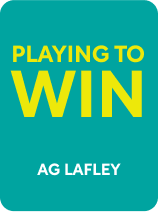

This article is an excerpt from the Shortform book guide to "Playing To Win" by AG Lafley. Shortform has the world's best summaries and analyses of books you should be reading.
Like this article? Sign up for a free trial here .
What does building a strong brand entail? Why do you need a strong brand to succeed in your target market?
Building a strong brand involves grouping together products that share the same inherent capabilities under one brand, and developing competitive advantages that help that brand stand out in the marketplace. You need a strong brand if you want to distinguish yourself from your competitors.
Read on to fully discover the process of building a strong brand.
Building a Strong Brand
The previous subsection covered company-wide capabilities. At small companies with just one brand or product, this might be the only set of capabilities you need to worry about. But at larger companies with multiple brands, each brand has a unique set of capabilities that ensures success in its arena. As we’ve seen, many P&G brands have their own capabilities that they use to deal with problems specific to their arena.
Below is what you need to know about building a strong brand:
Begin at a level that can’t be divided. Building a strong brand starts with building the capabilities of one brand that doesn’t need to divide any further capability-wise—trying to build different capabilities for each product within the brand would be a waste of time, since each product requires almost identical capabilities. The Pantene brand, for example, has many hair-care products. But each product within Pantene has the same inherent capabilities because each product has the same management, the same production, the same distribution, and so on. These initial capabilities will provide a base to build on as you reach divisible levels that require more diverse capabilities—for instance, a company segment containing different brands that require different capabilities.
Build competitive advantage at the aggregate level. After you build capabilities at the indivisible brand level, the next step in building a strong brand involves identifying brands that are similar and therefore able to share resources. This increases the efficiency and competitive advantage of both brands by combining their capabilities. For instance, you can divide the level “hair care at P&G” into different brands—such as Pantene and Head and Shoulders—with different capabilities. While Pantene and Head and Shoulders compete in different arenas and have built different capabilities to do so, P&G can increase its efficiency by creating shared systems between both brands. Both can have a research lab or even managers who understand both businesses and can share knowledge.
Figure out how the system is working, and expand or contract accordingly. Once you’ve created the systems for building a strong brand, you may realize that your company needs to expand, create more capabilities, or contract, because some firms would work better independently.
Note: While the capabilities of each brand should be specific to its arena, all of the brands within your organization should have at least some capabilities that align with those of the larger organization. If they don’t, the brands will have trouble integrating into a company-wide strategy and won’t be able to support one another.

———End of Preview———
Like what you just read? Read the rest of the world's best book summary and analysis of AG Lafley's "Playing To Win" at Shortform .
Here's what you'll find in our full Playing To Win summary :
- Why the cascade strategy will help you become victorious in your chosen field of play
- Why you should make every choice with the purpose of not just competing, but winning
- How to develop a system of decision-making for your company






